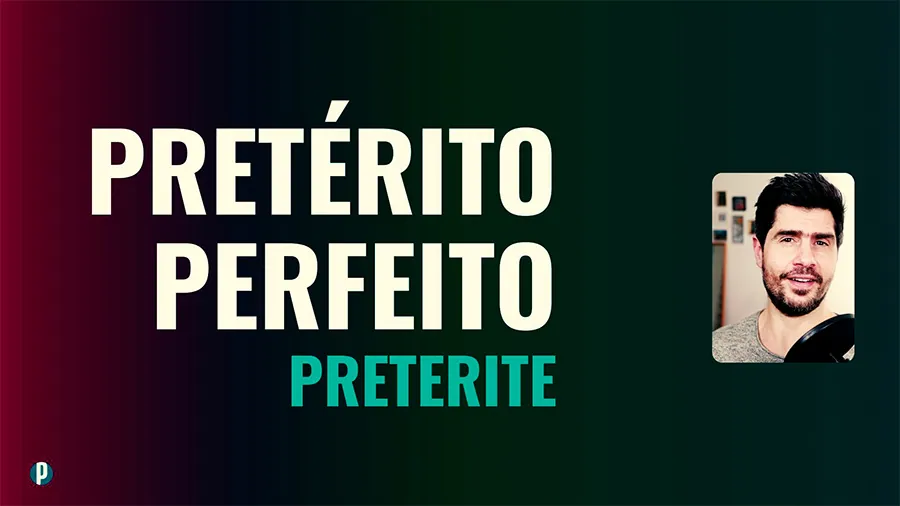ポルトガル語の完了時制と不完了時制: どちらをいつ使用するかを知る
ポルトガル人 完了過去時制と不完全過去時制 (別名) Pretérito Perfeito and Pretérito Imperfeito ポルトガル語で) は、母語が過去形 (英語も含む) 内でこの区別ができない言語学習者にとって、しばしば頭痛の種になります。
両者の違いは何ですか?
ポルトガル語の完了過去時制と不完了過去時制は、異なる時間的性質を暗示します。完了時制は時間枠が設定された完了したアクションを表しますが、不完了時制は時間の経過とともに広がり、継続性や反復的なアクションを暗示します。
混乱した?
完璧と不完全がマークされているこの短いスニペットを見てみましょう。 青 and 赤 それぞれ:
Eram mais ou menos 13h quando o meu pai chegou a casa. Eu estava a comer o almoço e ele sentou-se ao meu lado sem dizer uma palavra. Eu senti que qualquer coisa estava mal. O meu pai era uma pessoa bastante faladora e aquele silêncio não era normal. Decidi então perguntar-lhe: “O que é que se passa?” Ele permaneceu calado e eu estava a ficar assustado. Passado um momento lá disse que …
It was around 1 pm when my father got home. I was having lunch and he sat by my side without saying a word. I felt that something was wrong. My father was a talkative person and such silence didn’t fit him. I then decided to ask him: “What’s going on?” He remained silent and I was getting scared. After some moments he finally said that…
スニペットを読み、色付きの動詞の形に注意を払った後、上記の定義を理解できますか?
まだ迷っていても大丈夫です。完了時制と不完了時制のどちらを使用するかは、多くの場合微妙な時間的ニュアンスに依存するため、それを理解するのに時間がかかる場合があります。
以下では、それを詳しく見ていき、うまくいけば、事態が安定し始めることを願っています。読み続けてください。
To simplify, I am using the terms ‘Perfect’ and ‘Imperfect’ tenses to denote Pretérito Perfeito and Pretérito Imperfeito respectively.
You may also come across the term ‘Preterite’ instead of Perfect tense (Pretérito Perfeito).
緊張完璧
活用
規則動詞
| ANDAR (walk) | VIVER (live) | INSISTIR (insist) | |
| eu | andei | vivi | insisti |
| tu | andaste | viveste | insististe |
| você ele, ela | andou | viveu | insistiu |
| nós | andamos | vivemos | insistimos |
| vocês ele, ela | andaram | viveram | insistiram |
読書のヒント! ポルトガル語の通常動詞とその活用パターンについて詳しく学びましょう。
• ポルトガル語の規則動詞と現在時制の活用パターン
• ポルトガル語の規則動詞と過去形の活用パターン
不規則動詞
| SER (be) | IR (go) | ESTAR (be) | TER (have) | |
| eu | fui | fui | estive | tive |
| tu | foste | foste | estiveste | tiveste |
| você ele, ela | foi | foi | esteve | teve |
| nós | fomos | fomos | estivemos | tivemos |
| vocês ele, ela | foram | foram | estiveram | tiveram |
ポルトガル語の高頻度動詞 (および不規則動詞) について詳しく学びましょう。 ポルトガル語の知っておくべき不規則動詞.
ir
Ontem fui ao cinema.
昨日映画館に行きました。
Já foste às compras?
もう買い物は済ませましたか?
ser
Ontem fui irresponsável.
昨日の私は無責任でした。
Não foi ela, foste tu!
彼女ではなく、あなたでした!

Olá! I'm Pedro and I'm your Portuguese teacher.
Ready to unlock the beauty of European Portuguese? Portuguesepedia is your key! This all-in-one platform provides a wealth of learning resources, from bite-sized video lessons to immersive idiomatic dips. Perfect your pronunciation and aural comprehension with listening drills and solidify your grammar with in-depth articles. Start your Portuguese journey today!
Share this article
Get my guide "Key Strategies to Learn Portuguese" for FREE.


